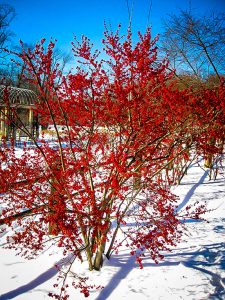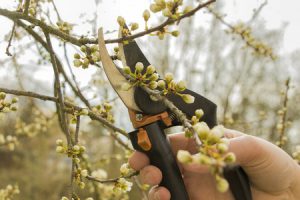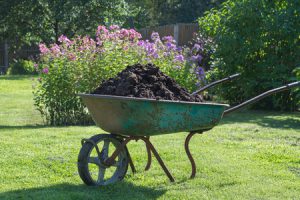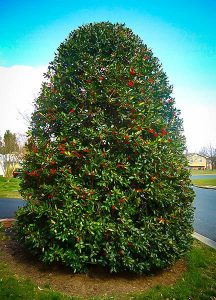What About Planting for Winter-Things You Can Do

In the past few months we have seen summer’s heat give way to milder and shorter days of fall. Depending on your location temperatures may have dipped a great deal, or perhaps only slightly. But what about planting for winter? Do I even need to do anything garden wise, or should I just let everything roll over into next spring?
Well, you can take a winter break, but if you do you will miss a great opportunity. This is a great time for improving things around your landscape. There are plenty of things that you can do during this period of the year. And frankly, some of them should you should only do at this time. Winter related tasks, landscaping changes, and adding in new winter friendly plants are a few of the things to consider. These will keep you busy during the times when your garden is its most dormant.
Tasks for the winter:
• Things to do prior to winter
One of the best things to do as winter approaches is to add a layer of mulch in your beds. Mulch provides you one of the best protectors of your shallow rooted plants in the cold of winter. It will help to insulate the roots from cold air. Use bark and compost to mulch in a 2-3 inch layer.
Cutting back your perennials is another thing you may want to do prior to winter. This is something that is completely up to the preference of the gardener. Many do not wish to do anything with their perennials. One very valid reason to cut them back is if there is any disease or insect damage to the foliage. If so, cut off the damaged leaves after the plant has gone dormant.
If you have a compost pile, this is a great time to add nitrogen to it. Nitrogen is essential to the breaking down of compost. This turns organic matter into the dark, crumbly, nutrient rich substance that is useful in our garden beds. Add nitrogen with items such as grass clippings and weeds. Or use commercial products like manure, blood or bone meal, and high nitrogen fertilizers.
To protect your plants from freezing temperatures ahead, it is a good idea to prepare frost cloths. When the time comes the cloth can be used to shield them. The protective cloth should not be a clear plastic, as this transmits cold to the plant. The cloth will give you a few degrees of protection. You may also choose to move outdoor container plants inside at this time.
• Maintain adequate moisture
Property owners commonly make the mistake of not keeping their landscape adequately irrigated when the fall and winter seasons arrive. Though you are past the searing heat and intensity from the summer, your plants will dry out with neglect. This does not mean that you should water as frequently as in the hot, dry months. You should turn your sprinkler system to the manual setting to keep from watering when you do not need to.
Allowing plants to get too dry during this time can damage the roots, which makes them prone to freeze damage. If you know a freeze is coming, it is a good idea to water a day before.
The caution for watering in the wintertime is to not do too much of it. During the summer it is usually pretty easy to decide when you need water. A simple glance at your lawn or your plants will tell you. That is not the case during the winter. As a standard rule of thumb, water your landscape well if you have gone two weeks without measurable rain.
• Pruning

The best time to prune is during the dormant winter period. You want to prune to clean out dead wood and branches that cross awkwardly. Pruning can thin out the density of the branches which will open up more sunlight to reach the ground. Sometimes the branches that need pruning are too high to reach safely. Consider hiring an arborist of a qualified tree professional when a situation like this occurs.
This is also a good time to prune shrubs. You can re-shape evergreen shrubs, but want to wait to prune spring blooming flowering shrubs until after they bloom. As a general rule you can prune shrubs back to about 75% of their natural size. If this is not enough it may be a sign that the plant is too large for the location. In this case they may need to be moved.
• Transplanting
Winter is a great time to transplant because the plant is going to be dormant. When you transplant you will inevitably lose some of the roots. So it is beneficial to do so at a time when the stress on the plant is at its lowest.
To transplant you will need to dig deep enough to get a root ball that will transfer with the plant. This obviously may be too big a task for the home gardener. It may require qualified assistance such as a tree or landscape professional to make sure it is done properly. You have built a good sized investment of time and money into plants that are important enough to be transplanted. The last thing you want is to destroy them by attempting a task that should be handled by a professional.
• Getting Soil Ready for Spring
Soils that are ready for spring plantings usually start with preparation in the winter months. January is the time to begin preparing your soil for new beds, getting weeds out, tilling, and adding organic matter.
This is the best time to test your soil pH level. Do this at at least every other year. Doing the testing at this time will give you ample opportunity to implement any recommendations that the testing lab suggests. Then you can begin planting for the spring.

Basic soil preparation always involves adding organic matter. The organisms contained in organic matter decompose and break down over time, releasing nutrients in the process. The result is that you have improved your soil, whether it is sandy or clay. Organic matter increases the water holding capability in sandy soil and it loosens and improves drainage for clay soil.
• Overwintering
Overwintering is a term used to describe gardeners taking steps to nurse certain plants through the cold of winter months. Depending on your planting zone you may need to bring some container plants inside to shield them from winter cold. Plants left outside during the winter may need attention when a hard freeze hits.
Here are a few things you should consider to help get your plants through a winter:
1. Adding additional mulch to beds gives roots a little more protection from temperature drops.
2. When you wait to prune until after first frost you can delay new growth until it is safer and less prone to being damaged by a late freeze.
3. Wait for the weather to warm up. When it is warm enough for you to be comfortable move your plants back outside. It is best to do so gradually. Give the plants a few hours of sun a day or set it in a shaded spot.
Landscape Ideas for Winter:
Winter provides us with an opportunity to put forth a look different from any other time of the year. The winter garden does not have to be drab and colorless. No, you won’t have the colors of a deep spring garden in the dead of wintertime. Instead color pockets strategically placed here and there can be accomplished and maintained with minimal effort. There exists a wide variety of plants that you can grow in the winter.
• Before you get started keep in mind that patience is your friend. A winter garden is something that doesn’t have to be established in a single season. Take your time. You may want to assess what you have and how that looks in the wintertime. Identify specific areas in your landscape that you might be able to add to in future years. At this time walk nearby neighborhoods, parks, or public gardens. See what possibilities exist that you might be interested in adapting yourself. This is an excellent way to see certain plants from December to March, and develop ideas for the future.
• Any gardener needs to thoroughly plan a landscape project prior to beginning. This applies to both small and large endeavors. The time you spend in planning will be paid back to you in the better results you achieve as well as the time you may well save by not having to circle back and re do things that did not turn out well the first time. When you make a poor placement on a tree that subsequently has to be either removed or transplanted the result is usually time and labor intensive, not to mention expensive.
• Prepare a scale drawing, with your anticipated plants and hardscape included. Make sure you are aware of the mature size of what you are wanting to plant, to avoid crowding.
• One good rule of thumb to use is to ask yourself what you want a plant for. This applies whether you are looking at adding to your winter landscape or any other time of the year. Is it for shade? For privacy? To add color during a certain time of the year? When you have answered these questions, then choose plants that will fit within this plan. From the sun or shade it will receive, to the size it will attain. Don’t plant anything without knowing these facts about your plants.
• Winter months can be a good time to go beyond the normal tasks and actually plant a few trees. Tree roots won’t grow during the dormant months of the winter. But they do give a new or transplanted tree a chance to acclimate better to the soil.. You should choose trees that are adapted to your area. Do not plant more trees than your landscape can easily accommodate. This goes back to the planning mantra stated above, and it cannot be emphasized too greatly. Too many trees in a landscape usually ruins the look. Plus it creates problems with competition for soil nutrients, and poses hazards with power lines and structures.
Great Plants for Winter:
There are a surprising number of plants that can be grown and will look great during the winter. A few suggestions include the following:
• Hollies

If ever there is a shrub that epitomizes the winter season it is a holly. From Christmas carols to the red berries they produce, the holly is one of the most widely used and versatile evergreen shrubs we have. They range in size from varieties that are very small to the stately Nellie R. Stevens, which you can also grown as a tree. Because hollies have so many varieties it is important that you know what you are buying. Choose a variety that will suit your own landscape.
• Mahonia
Mahonias are smaller evergreen shrubs that flower in winter. The Leatherleaf variety has yellow blooms during the winter.
• Snapdragons
These do well as a perennial in milder winter climates. If you plant them In zones lower than 7 they will probably need to be planted as an annual.
• Purple Wintercreeper
Wintercreeper is an excellent overall ground cover that turns deep burgundy color in the wintertime.
• Pansies
Perhaps the hardiest annual in resisting cold weather, pansies are staples of the winter garden. Plant them in the fall in either beds or containers.
• Violas
Similar to Pansies, Violas have the same cold tolerance, hardy into single digits.

• Daffodils
Late winter flowering daffodils are small with colorful yellow flowers. In milder winter climates the flowers will appear in February.
• Nandina
A small evergreen with several varieties to choose from, each producing colorful winter foliage.
Conclusion:
The winter season doesn’t have to be a time of inactivity in your gardens. With a bit of thought and planning you can place winter color around the landscape. Then you can replace that color with your regular spring blooms when the weather warms up. But even if you aren’t interested in winter color, use the dormant period as a time to re charge. And also to work on the multiple winter tasks that need to be done.
Compost image attribution:
Copyright: <a href=’https://www.123rf.com/profile_svetlanacherruty’>svetlanacherruty / 123RF Stock Photo</a>
Pruning image attribution:
Copyright: <a href=’https://www.123rf.com/profile_honzik7′>honzik7 / 123RF Stock Photo</a>